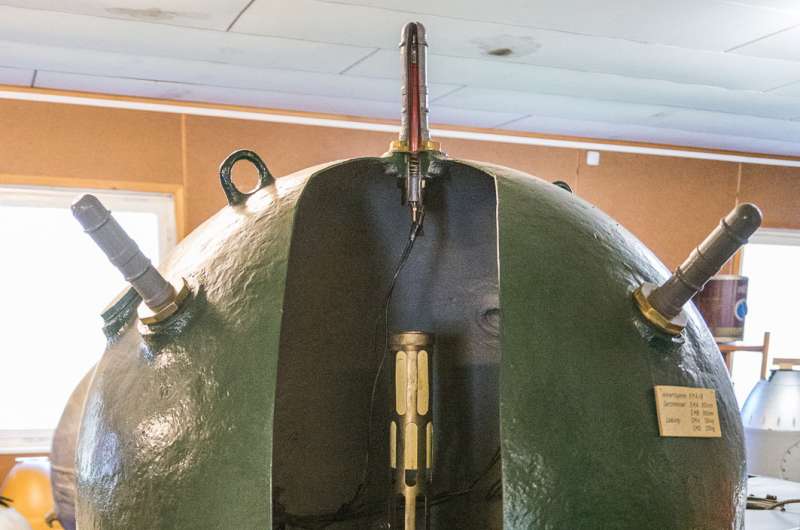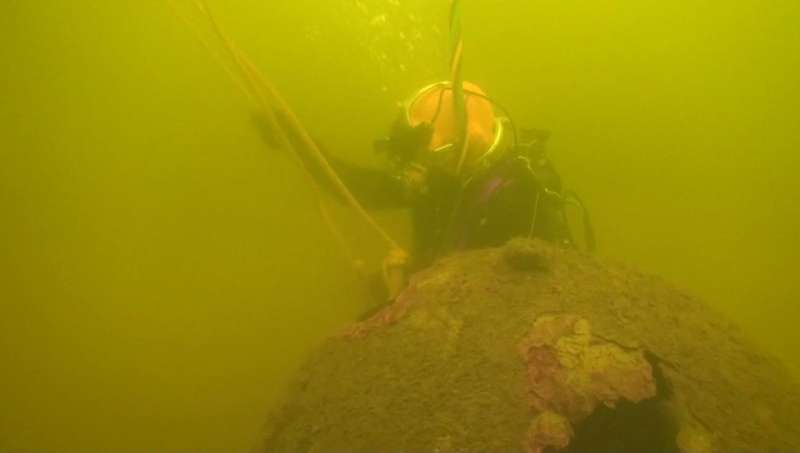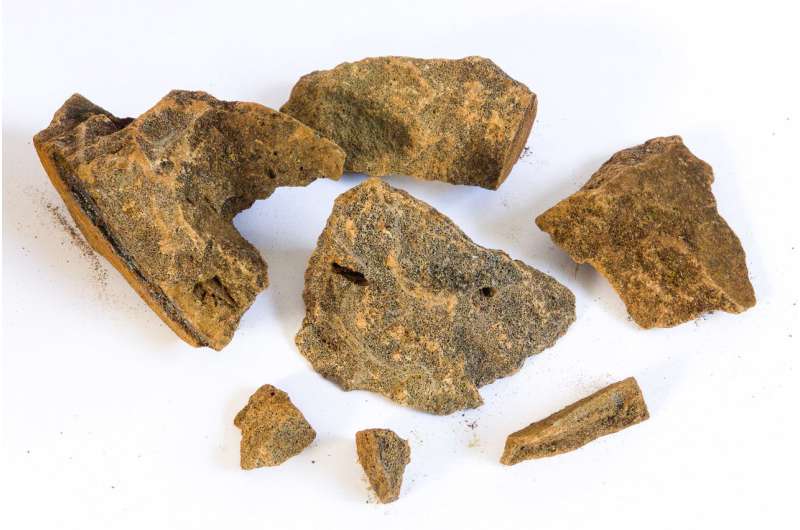Hazardous contaminated sites in the North and the Baltic Sea

Millions of tons of old ordnance and poison gas grenades lie at the bottom of the North and the Baltic Sea – dangerous legacies of two world wars. The old weapons are corroding and releasing the toxic substances they contain. Disposal is hazardous, time-consuming and expensive. This has led Fraunhofer researchers in cooperation with salvage companies to develop a semi-automated robotic disposal system.
For decades, an estimated 1.6 million metric tons of conventional and 220,000 metric tons of chemical warfare agents have been decomposing at the bottom of the North and the Baltic Sea – an enormous potential danger for flora and fauna, as well as for salvagers. These explosive remnants of war are becoming an ever-greater problem. Maritime construction is increasing, new shipping channels need to be excavated, pipelines built, and submarine cables from wind parks laid to shore. The arsenal of weapons located by the explosive ordnance disposal teams ranges from pistol cartridges and rocket-propelled grenades to naval mines, high-explosive bombs, incendiary bombs, torpedoes and poison gas grenades. Most of the explosive cargo was sunk at sea at the end of the Second World War. Fishermen were tasked by the allies with dumping the weapons in designated areas far out at sea. Some, however, obviously tipped their cargo overboard much earlier to save fuel. A considerable amount of ordnance is therefore found outside the marked munition areas. Old mines, torpedoes, and bombs can also be displaced as a result of strong currents and trawling activities.
Mines in shipping channels

The result is that divers from explosive ordnance disposal teams are continually having to clear munition from shipping channels that were considered free of mines. War debris can now be tracked down more easily using sensitive sonar technology and magnetic probes – meaning that increasing numbers of bombs, grenades and mines are being discovered. Up to now, disposal has involved dangerous manual labor by divers from ordnance disposal teams or specialized companies. Recovering large bombs is impossible: A change in pressure is often enough to cause them to explode. The solution is to relocate them to known munition areas or detonate them on the spot. This disperses some of the toxic explosive throughout a large volume of water. Explosions can also fatally injure marine life such as porpoises and fish.
What is needed are new environmentally friendly, non-hazardous and economic solutions to dispose of large quantities of explosive war debris. Funded by the German Federal Ministry for Economic Affairs and Energy, the Fraunhofer Institute for Chemical Technology ICT in Pfinztal, together with the University of Leipzig and several industrial partners, has now developed RoBEMM, a "robotic underwater salvage and disposal process for the disassembly of ammunition in the sea." The explosive ordnance disposal company Heinrich Hirdes EOD Services GmbH coordinates the project. "The project's long-term goal is to render underwater ordnance harmless directly where it is found in a semi-automated process and then dispose of it in an environmentally friendly manner," explains Paul Müller from Fraunhofer ICT. The automation and connection of all subcomponents is conducted by automatic Klein GmbH.
Fraunhofer ICT's core area of expertise in the project is technical safety and the characterization of hazardous substances. Its task was to develop a method to handle explosives in which every step minimizes the inevitable residual risk of spontaneous explosion. This includes ordnance handling, disassembly, destruction of explosives, and residue treatment. Desensitizing explosives with water and subsequent fragmentation is a crucial operation. The metal cases are subsequently rinsed and the explosives thermally treated, leaving only scrap metal to be brought ashore.

Every bomb is different
Even after more than 70 years, the weapons are still dangerous: the explosives can still detonate, and the remnant substances are highly toxic. Researchers at Fraunhofer ICT have, for example, determined that the impact sensitivity of explosives may even increase over time. To avoid spontaneous detonation, they must make sure ordnance is handled with the greatest caution. The extremely varied types of munition are a serious problem. At the end of the war, munition was manufactured using any material to hand. Knowing beforehand which substances are present and how they might suddenly react with one another is impossible. "Our technical safety investigations of the explosive mixtures used at the time have allowed us to determine what is especially important during handling," says the safety expert Paul Müller. Initial tests with the new salvage and disposal system RoBEMM, whioch is set to replace dangerous diver deployments and minimize the often unavoidable detonation of ordnance, will begin soon.
Provided by Fraunhofer-Gesellschaft


















